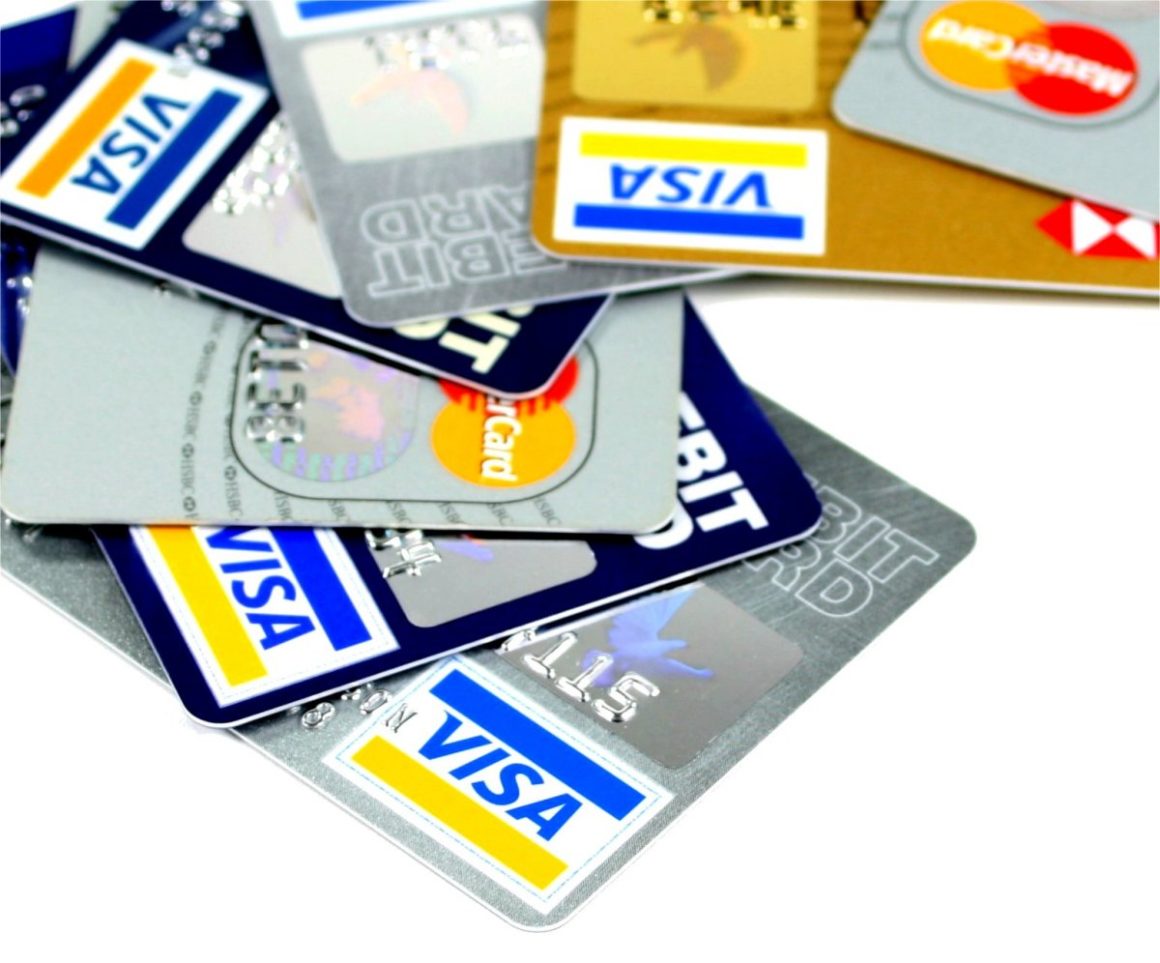In this issue
- Will Ethereum 2.0 help or hinder Visa’s USDC embrace?
- STABLE Act would rein in stablecoins like Tether and Diem
- S&P Dow Jones to launch cryptocurrency indices
- China soon to give millions of CBDC yuan to 100,000 more citizen-testers
- Funding spotlight: Walmart’s big investment in India
From the Editor’s Desk
Dear Reader,
The cleanest shirt in the dirty hamper. That’s the phrase often thrown among business channel talking heads (including yours truly) about the U.S. dollar. Coined by U.S. bond king, Bill Gross about U.S. treasuries, he speaks of a volatile global environment where America remains a safe haven. And now, we’re seeing this sentiment play out with stablecoins.
This week on the Current Forkast, we cover more developments from Visa, as the company introduces yet another cryptocurrency-related credit card where consumers can pay for purchases using USDC — the U.S.-dollar reserve-backed stablecoin from Circle. It’s a testament to what Standard Chartered CEO Bill Winters said this week in Singapore, at the Singapore FinTech Festival, about the inevitability of digital currency adoption on a widespread scale. Expect news from Standard Chartered shortly in this space. The bank is just another one to add to the growing list of legacy global firms that are embracing the new reality of digital currencies.
Whether it be state-backed or private, the roads are being carved out right now. The map is being redrawn. And we are putting our cartography skills to good use.
Until the next time,
Angie Lau
Founder and Editor-in-Chief
1. Visa dives deeper into crypto

By the numbers: Visa Ethereum — over 5,000% increase in Google search volume.
Just days after announcing a bitcoin rewards credit card, Visa is also tapping into Ethereum through the world’s second largest stablecoin by market capitalization, USDC, which lives on the Ethereum blockchain. However, USDC has announced integrations into other blockchains such as Solana, Stellar and Algorand.
- Visa head of crypto Cuy Sheffield (@cuysheffield): “We’ve been closely following the growth of stablecoins for the past two years and I’m super excited for Visa to partner with @circlepay to help them connect USDC to our global network.”
- Meanwhile, Ethereum co-founder Vitalik Buterin unveiled an updated roadmap for Eth 2. @VitalikBuerin: “The roadmap I made back in March updated with (very rough and approximate!) progress bars showing what has been done and some of the recent tweaks to the roadmap itself. A lot has been accomplished, but still a lot remains to be done!”
Forkast.Insights | What does it mean?
The default currency of international commerce is the almighty U.S. dollar. A foreign company might have a market primarily of U.S.-based customers, and in turn might have some expenses, usually paid via their corporate credit card, denominated in U.S. dollars. But what if they don’t have a U.S.-dollar account? That means a foreign exchange hit on both sides.
USDC provides an alternative to using the U.S. dollar but still maintains its liquidity. In China, for instance, strict capital controls means businesses need to be cognizant of how much capital they send out of the country regardless of how it’s denominated. They would have no problem receiving foreign remittances, but would run into barriers trying to send out to vendors abroad.
But, if a firm conducted all of these transactions in USDC they could effectively bypass capital controls. Instead of needing to convince the vendors they need to accept USDC, they would simply pay with Visa — business as usual.
The wild card here is Ethereum. For this to take off and handle the volume of transactions required by Visa, ETH 2 must be in full operation or another blockchain may have to be used. Last week on The Current Forkast we reported that despite some hurdles, the first step towards ETH 2 has been met with the completion of the fundraise for staking (Ethereum’s Joe Lubin contests that these were hurdles, telling Forkast.News: “The actual reason was that most sophisticated, rational actors, who had been planning their strategies for quite a while, choose to wait until near the end of the pre-threshold attainment period to gather maximal info before making the commitment”). Once ETH 2 is out of testnet and into mainnet, it will likely be ready as a partner for this project.
2. US lawmakers want to reel in stablecoins

By the numbers: STABLE Act — over 5,000% increase in Google search volume.
Congresswoman Rashida Tlaib and two other Democrat lawmakers have introduced the Stablecoin Tethering and Bank Licensing Enforcement (STABLE) Act. The proposed legislation would mandate all stablecoin issuers to obtain a banking charter and FDIC insurance. Also, crypto companies must maintain a 1:1 dollars reserve with the Federal Reserve for every stablecoin issued.
- Although the official press release names Facebook’s Libra (now renamed Diem) as an example, lawmakers may also be after the fourth largest crypto currency in the world by market capitalization, and the world’s most popular stablecoin, USDT.
- According to a statement obtained by The Block, Republican lawmaker Tom Emmer is opposing the bill.
Forkast.Insights | What does it mean?
What does the “T” stand for in the STABLE Act? It may be no coincidence that the title of the bill includes the word “Tether.” The popular usage of “tether” means “tie,” as in: a stablecoin is tethered to the value of its fiat counterpart. However, it can also be a double entendre — calling attention to the stablecoin Tether, the antics of its parent company Bitfinex, and why there is a need to regulate this US$20 billion-plus industry.
In 2019 the law firm Clifford Chance highlighted that stablecoins would likely soon see regulatory scrutiny as in most jurisdictions they would meet the definition of a bank deposit, a legally binding term.
Even though the bill’s sponsors single out Libra, Libra/Diem hasn’t launched yet. If passed into law, the stablecoin that likely would be most immediately affected by this would be Tether.
As Forkast.News recently reported, Tether has been the subject of an intense amount of scrutiny in its short life because of the lack of transparency surrounding its underlying assets. In 2018 it was revealed that Bitfinex had quite a sour relationship with its auditor that ended with the auditor effectively terminating Bitfinex as a client. No audit has been done on the company since 2018. In 2019, it revealed that every USDT token issued was not backed 1:1 by dollars but rather “other assets and receivables from loans made by Tether to third parties, which may include affiliated entities.” All the while, Tether’s market cap has reached nearly US$19 billion, making it by far the largest stablecoin. But the question is whether they would actually be redeemable 1:1 for dollars. In theory, lack of direct pegging to a dollar would mean that there is less of an underlying asset that gives the token value than claimed. Without this 1:1 issuance, the token’s value could drop precipitously if there are sudden withdrawals
For what it’s worth, the PAX token — a stablecoin issued by Paxos — and the Gemini Dollar, another USD-backed stablecoin, are both already set up as trusts in the state of New York and hold their respective funds in FDIC-insured third-party bank accounts.
3. S&P Dow Jones to launch cryptocurrency index

By the numbers: S&P Dow Jones — over 5,000% increase in Google search volume.
S&P Dow Jones Indices (S&P DJI) has announced a partnership with Lukka, a New York-based crypto asset software and data company, to launch a global crypto asset indexing capabilities. “Wow, big news! #Bitcoin is coming to Wall Street,” tweeted bitcoin and cryptocurrency investor Tyler Winklevoss.
- “With digital assets such as cryptocurrencies becoming a rapidly emerging asset class, the time is right for independent, reliable and user-friendly benchmarks,” S&P DJI head of innovation and strategy Peter Roffman said.
- “Our collaboration with S&P DJI is yet another milestone that bridges the gap between the crypto asset ecosystem and traditional financial services,” Lukka CEO Robert Materazzi said.
Forkast.Insights | What does it mean?
Manipulation of market pricing data is a very real problem in the cryptocurrency industry, so much so that the Hong Kong Securities and Futures Commission highlighted it when they announced a new framework in November for virtual asset trading platforms that operate in the territory and target its residents. For good reason: CoinMarketCap has struggled with allegations of price manipulation by rogue actors feeding it bad data and has promised to do better, investing in the creation of tools to counter it.
S&P Dow Jones isn’t going to have the same sort of problems. Not to disparage existing cryptocurrency indices, but S&P Dow Jones is a few steps above them in terms of data hygiene. Institutional-grade investors have no problem trusting their data, but might be wary of others. As crypto becomes an institutional-grade asset, it needs institutional-grade data. S&P Dow Jones may be the one to provide it.
4. In China: DCEP digital yuan testing widens to Suzhou

In the biggest test yet of China’s new central bank digital currency (CBDC), 100,000 residents of the eastern city of Suzhou will receive a collective 20 million DCEP e-RMB (about US$3 million) in a government giveaway this Friday, a day before the nationwide “double 12” shopping festival on Dec. 12.
- The Suzhou test of China’s new “Digital Currency Electronic Payment” (DCEP) will be double in size compared to a similar test in Shenzhen in October.
- New functions of the e-RMB wallet will debut in Suzhou. Multiple sources told Forkast.News that offline payment and contactless payment based on NFC (Near Field Communication) technology will be tested in Suzhou for the first time. According to local media, stores in the Xiangcheng district of Suzhou have installed NFC-based point of sale terminals in preparation.
Forkast.Insights | What does it mean?
The “air drops” of red packets to publicize and promote familiarity with DCEP have thus far been a huge success in China’s testing of its new CBDC, and the upcoming Suzhou trials will likely only bring the digital yuan closer to a nationwide launch. As Forkast.News has reported before, there are some legitimate questions and concerns about DCEP, especially with regards to privacy, and the more people get their hands on the platform the easier it’s going to be to ease these concerns.
The next challenge for the DCEP digital yuan is going to involve training people for a life after Alipay/WeChat Pay. There’s nothing to suggest that these platforms are going away anytime soon, but the Chinese government may be gearing up to provide an alternative. It might be that DCEP is the new payment rail behind the two popular mobile payment platforms, or it might be that DCEP apps exist alongside them as a competitor. Regardless, the Alipay/WeChat Pay duopoly on the mobile payments space may be coming to a close as the People’s Bank of China has become uncomfortable with the control they have been losing over the country’s money supply.
5. Funding spotlight: investments in India
PhonePe — corporate round, US$700 million, India
India’s PhonePe, a mobile payment platform with more adopters in India than Paytm or Google Pay, announced a US$700 million funding round last week. Lead investor Walmart raised the round’s funds to expand the retail giant’s influence in India. Flipkart acquired PhonePe in 2016, which it left in late November of this year. One-quarter of the Indian delivery and eCommerce giant Flipkart, which was acquired by Walmart in 2018, will soon be sold in an IPO managed by Goldman Sachs.
Signzy — venture, US$3 million, India
Bangalore’s Signzy, a fintech firm focused upon “automating […] back-office operations using artificial intelligence,” announced a US$3 million investment round this week. The Singaporean branch of Vertex Ventures, a Silicon Valley firm with six international branches, was the lead investing party in the fundraise. Signzy’s co-founder, Ankit Ratan, said: “[the investors’] faith and trust in us is a great encouragement for the entire Signzy team to double down on executing the next phase of our growth strategy.”
Forkast.Insights | What does it mean?
When it comes to payment systems adoption, the most straightforward option for consumers is an integrated account with debit and credit account support — such as Venmo or PayPal. An alternative to this is a payment system with unique cross-retailer support, such as Amazon Pay, which has gained traction in recent years. As of now, it isn’t clear where PhonePe places into the payments field, but it’s clear that their partnerships with Flipkart and Walmart hold significant implications for the future of Indian eCommerce.
As demand for cost-cutting continues in an uncertain economy, outsourcing will continue. But what happens when demand for outsourcing hits a certain point that there’s not an adequate supply of labor? Artificial intelligence steps in to augment things and make the process more efficient. We aren’t at that point quite yet, though Signzy is imagining a future where that’s the case.




